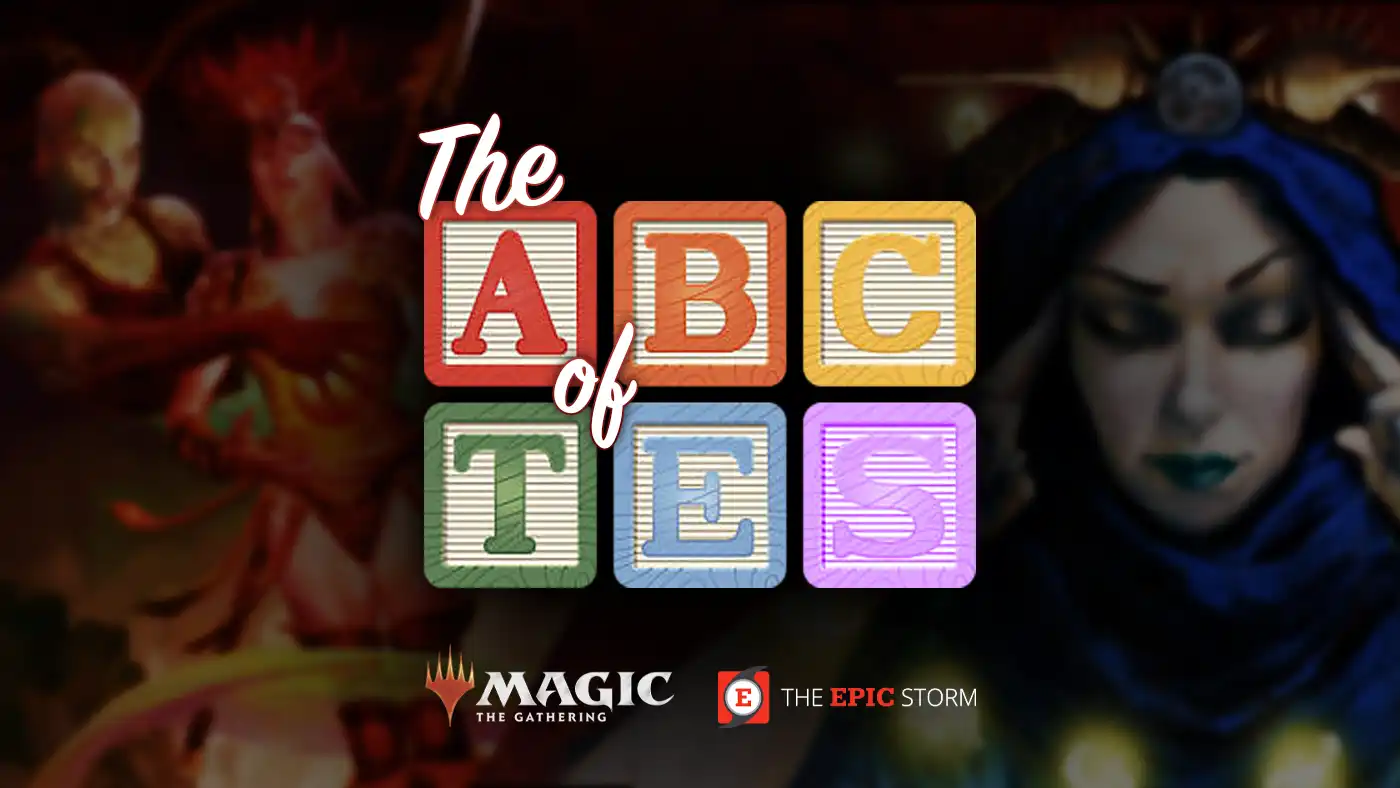The combo turn of The EPIC Storm is one of the most fun parts of the deck. It also has many little twists and turns once one decides to go off. Keeping one's options open is the key to winning the most games over time. This article looks at all of the ways to keep all of those options and information for The EPIC Storm player, and how best to exploit that information imbalance.
Making Mana
[[Dark Ritual|]]
[[Mox Opal|]]
[[Rite of Flame|]]
Mana is the core of any combo turn in The EPIC Storm. The amount of mana needed for each combo engine and how to count one's mana, as discussed in previous The ABCs of TES, are the building blocks of making a combo turn. Sequencing one's mana is an important aspect to maximize the turn. Sometimes, baiting the opponent into countering a ritual or making it seem like a ritual is unimportant to the turn is the key to victory.There are a couple easy heuristics to practice in most games. When casting rituals, cast [[Rite of Flame]] before [[Dark Ritual]]. The main matchup where this matters is when the opponent has some form of soft permission like [[Daze]] or [[Spell Pierce]]. Because [[Dark Ritual]] is an Instant, as opposed to [[Rite of Flame]] being a Sorcery, one can respond with it and pay for the soft piece of permission. While this is only an important tactic in a few matchups, sequencing like this all the time is more generally correct and builds good muscle memory for when it matters a lot. This heuristic can sometimes be ignored as a tactic to try to bait the opponent to interact. If one does not need the mana from [[Dark Ritual]] on a [[Galvanic Relay]] turn, casting [[Dark Ritual]] first off of one's only black source can make it appear like a choke point, incentivizing the opponent to react.It is easy to treat all of the artifacts the same. Sequencing them appropriately, however, is important to give up the least information and not get blown out by having a [[Lion's Eye Diamond]] countered. For this reason, [[Mox Opal]] is generally the last artifact to be played. Not telling the opponent that one needs
Metalcraft is an important sequencing heuristic. To give up less information, play [[Chrome Mox]] towards the end of a set of mana. The card that is imprinted
(or lack thereof) gives further context to the opponent. Sometimes [[Chrome Mox]] does have to be played earlier in order to cast another spell off of it, but that is unavoidable. This sequencing heuristic flips around when playing around Artifact destruction such as [[Force of Vigor]] rather than counter magic. When playing around Artifact removal, [[Lion's Eye Diamond]] should be the last artifact played. This is to not give the opponent a window to destroy it before a tutor is put onto the stack. [[Chrome Mox]] can be the first artifact played to bait the opponent to try to destroy it with the trigger on the stack. [[Mox Opal]] tends to be second, because if the opponent wants to destroy two artifacts, one of them might as well be useless. If the [[Mox Opal]] is third, the opponent gets to destroy two good artifacts instead of a [[Mox Opal]] without
Metalcraft. These heuristics tend to be much more situation specific. Keep them in mind, but look for reasons to deviate in game.
Veil of Summer
[[Force of Will|]]
[[Veil of Summer|]]
[[Daze|]]
[[Veil of Summer]] is the primary form of protection from counter spells in The EPIC Storm. If it resolves, regardless of what was cast before or after it, cannot be countered for the rest of the turn. Given that, there are two main ways to cast [[Veil of Summer]]: as a pseudo [[Silence]] effect or as a [[Cryptic Command]] to
"counter" a counter spell and draw a card. At face value, one of those cases seems better than other
(drawing cards is always great!). In practice, drawing the card may not matter if one can just win the game. Also, there will be many occasions where a [[Veil of Summer]] will be countered and one will go off anyway.Starting on [[Veil of Summer]] before casting any many or a [[Wishclaw Talisman]] can be terrifying for opponents. This creates an information imbalance where the TES player knows how important the [[Veil of Summer]] is while the opponent does not know what the follow-up is. The two best ways to exploit this are more expensive engines like [[Peer into the Abyss]] and the [[Echo of Eons]]. With [[Peer into the Abyss]], the opponent not interacting with [[Veil of Summer]] might allow it to be cast. Spending extra mana on a second [[Veil of Summer]] or a [[Daze]] might preclude [[Peer into the Abyss]] as an option. Similarly, [[Echo of Eons]] is much better with a [[Veil of Summer]] resolved. By turning off all of the counter magic of the opponent, all one needs to win in their new [[Echo of Eons]] hand is mana and a tutor, rather than hoping that the opponent did not draw into any counter magic. Hiding that the plan is [[Echo of Eons]] and leading on that early [[Veil of Summer]] denies them the knowledge that they could be drawing more cards. If they only have one counter spell, they might just not cast it because they know they cannot stop the follow up and hope that the [[Veil of Summer]] is a bluff.Casting [[Veil of Summer]] reactively is also powerful. Waiting to the last moment to cast an instant is a good Magic heuristic and certainly applies to TES. Waiting also helps play around soft permission that might cut off a color of mana in an odd spot. Initial colored sources tend to be a choke point and if the opponent is able to cut off those it greatly influences one's ability to make mana. The main reason to hold [[Veil of Summer]] longer is that it gives more options. If the opponent interacts enough with a [[Veil of Summer]] and generates an extra storm or two, it may provide an option to provide a natural lethal [[Tendrils of Agony]] rather than trying to win through an engine. Not getting too locked into a plan as the game state changes is one of the more important aspects of playing any combo turn. Waiting to cast [[Veil of Summer]] opens up these lines more often than not.
Tricking the opponent
[[Chrome Mox|]]
[[Taiga|]]
[[Lotus Petal|]]
On the combo turn, there tends to be a piece of mana that is a choke point. Getting the opponent to interact with anything other than that piece of mana can be important. Lots of small things can help make these spells seem less important. Opponents might try to read one's mana, but tapping the most specific piece of mana to cast a spell can help with that. For example, tapping a [[Chrome Mox]] with a red card imprinted to cast a [[Rite of Flame]] is better than tapping a [[Taiga]]. Not tapping the [[Taiga]] also represents a [[Veil of Summer]] that may make the opponent hold their counter magic longer than they should.Holding cards like [[Lotus Petal]] or an extra land to represent a new ritual mana color can bait opponents into thinking they can counter a ritual to cut off a color and buy another turn. Telling the right story to the opponent about what one is intending to do by casting things in the right order and using the right mana is a learned skill. While feeding an opponent this story, try to make the threatening spells seem meaningless and unimportant spells pivotal to the combo.
Putting it all on the stack
Once one has gotten their engine card onto the stack and resolved it, the game gets much easier. The hard part is getting to there through all of the disruption an opponent may have. If you have any more questions about the combo turn, feel free to message me on
Twitter or in the
Storm Discord!










